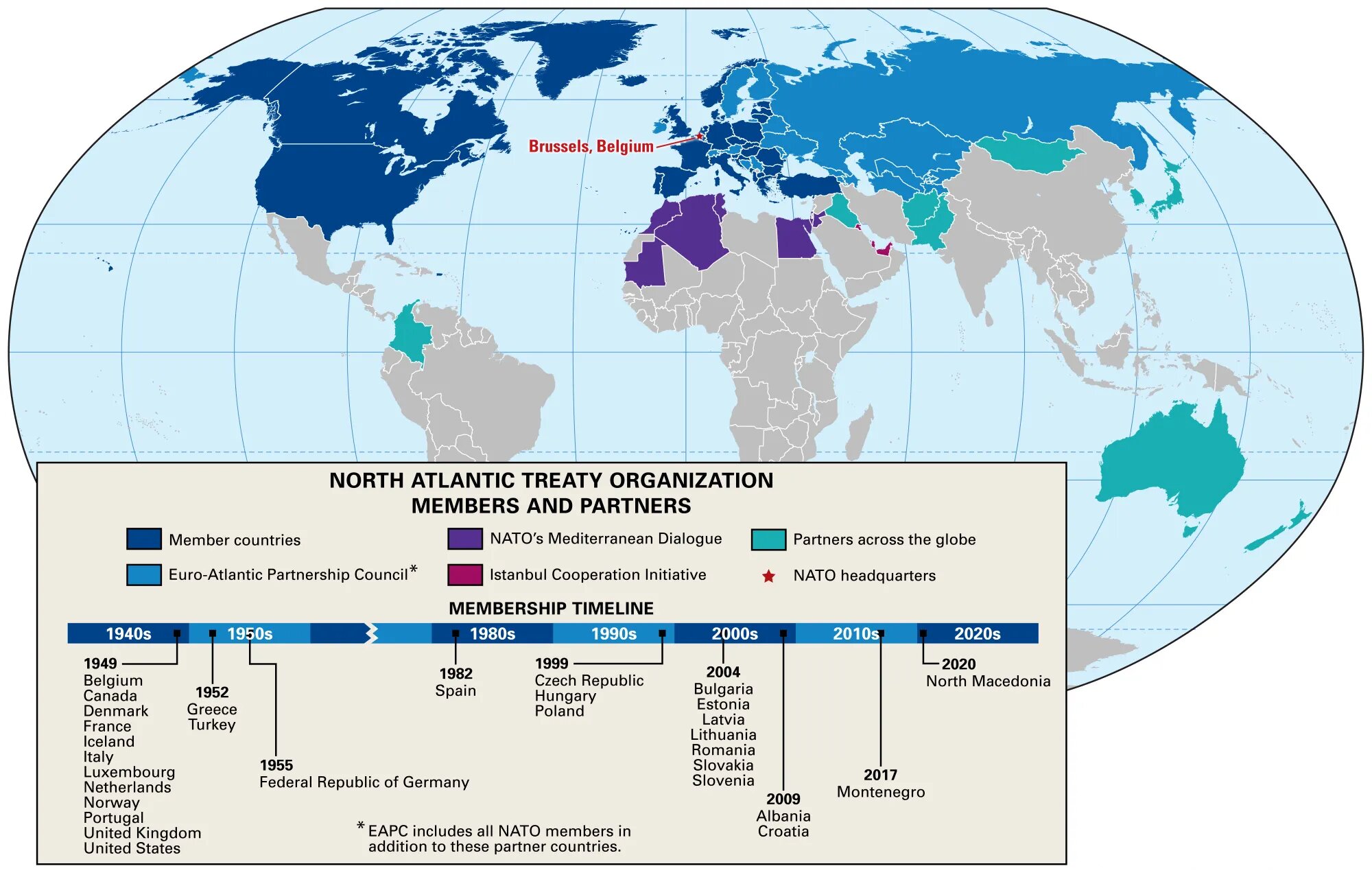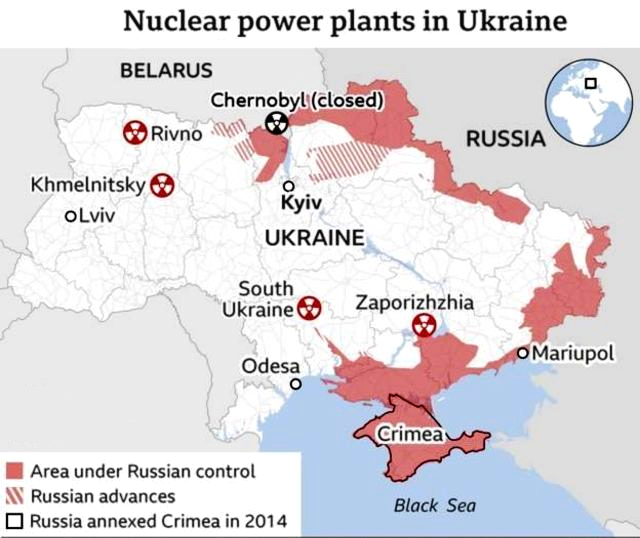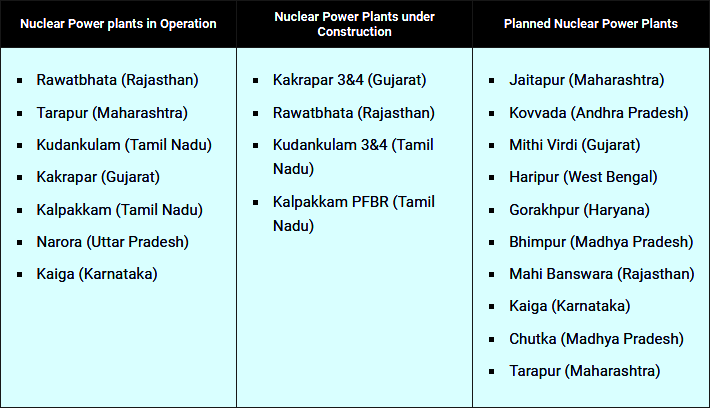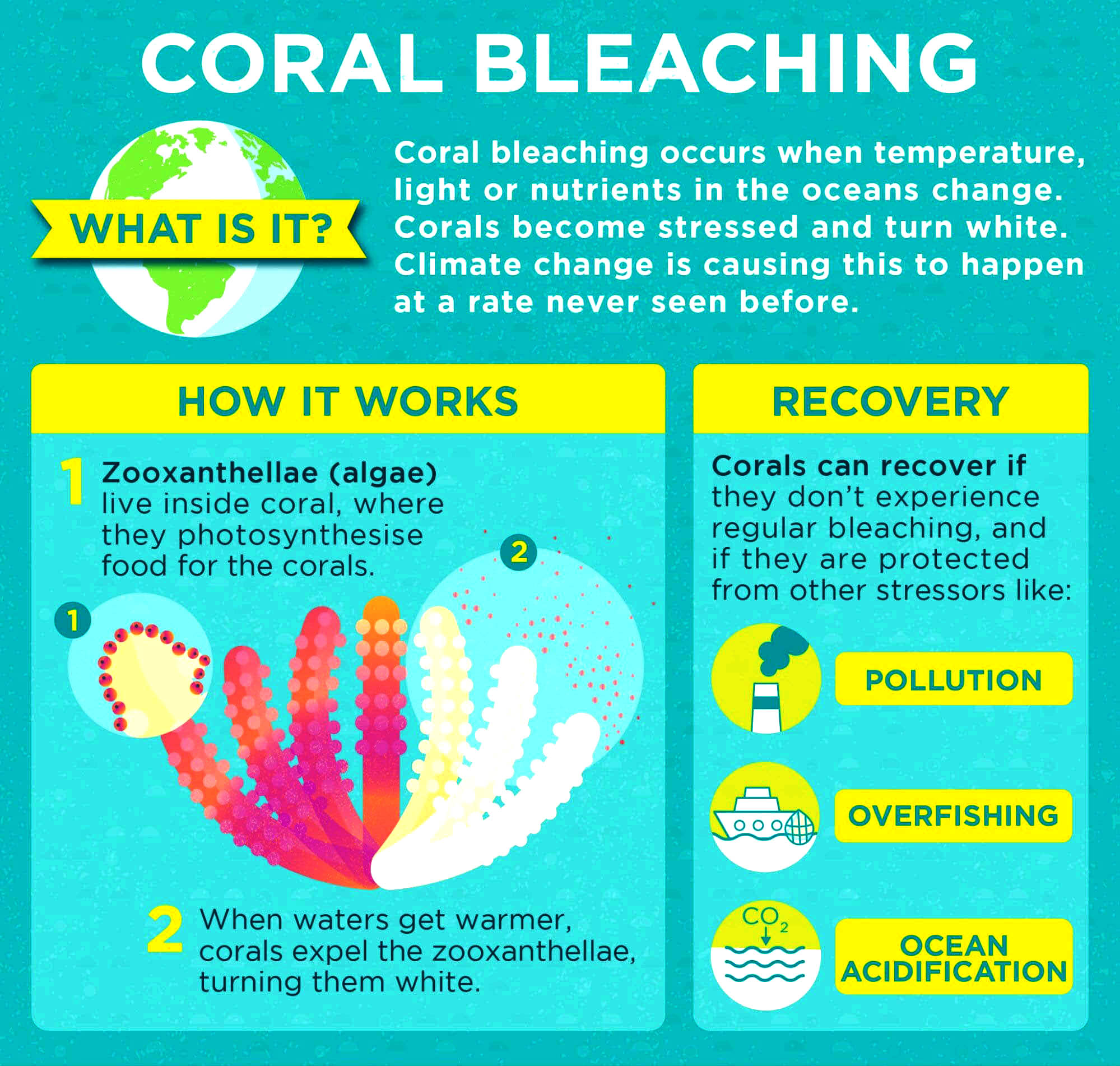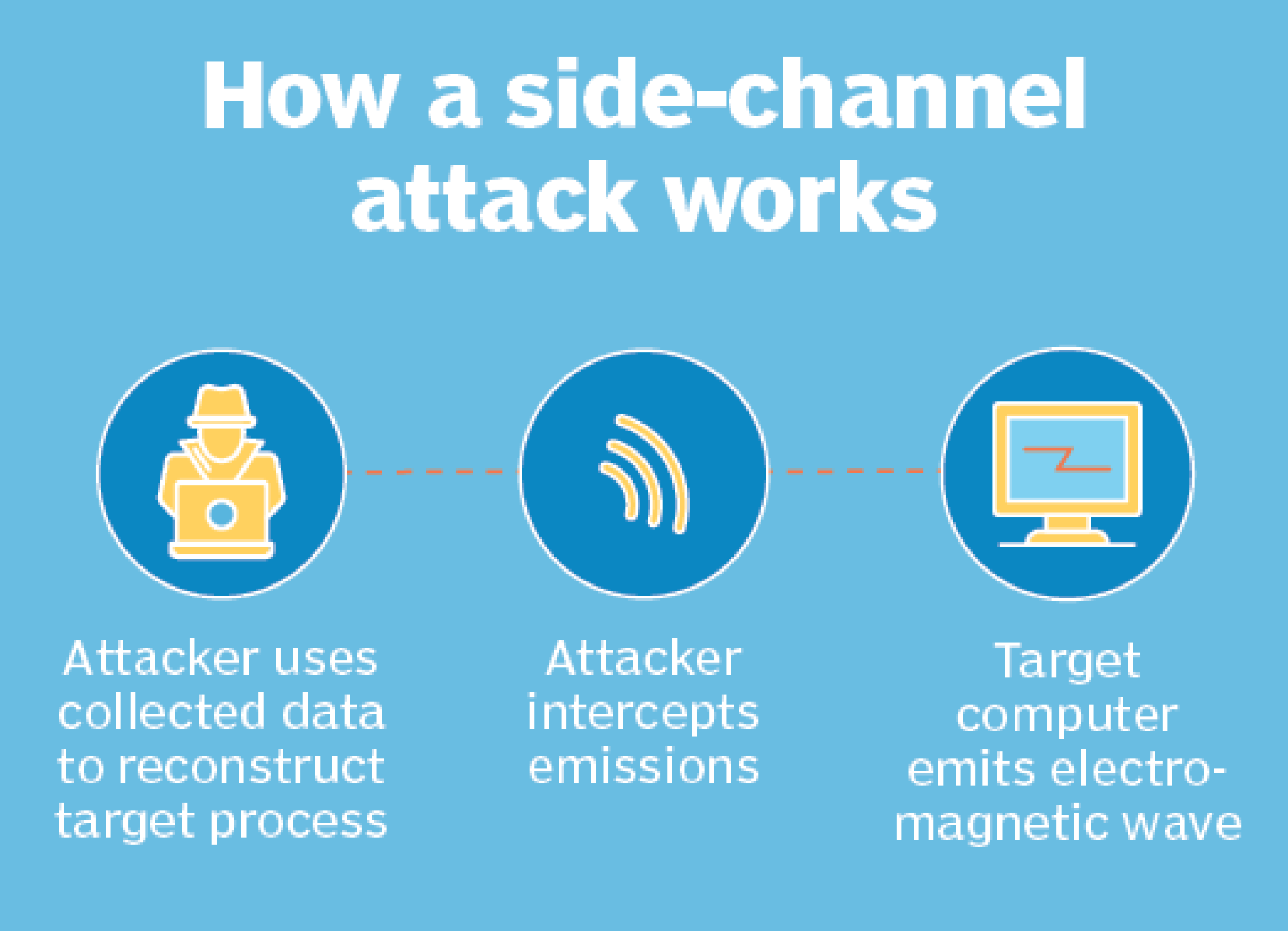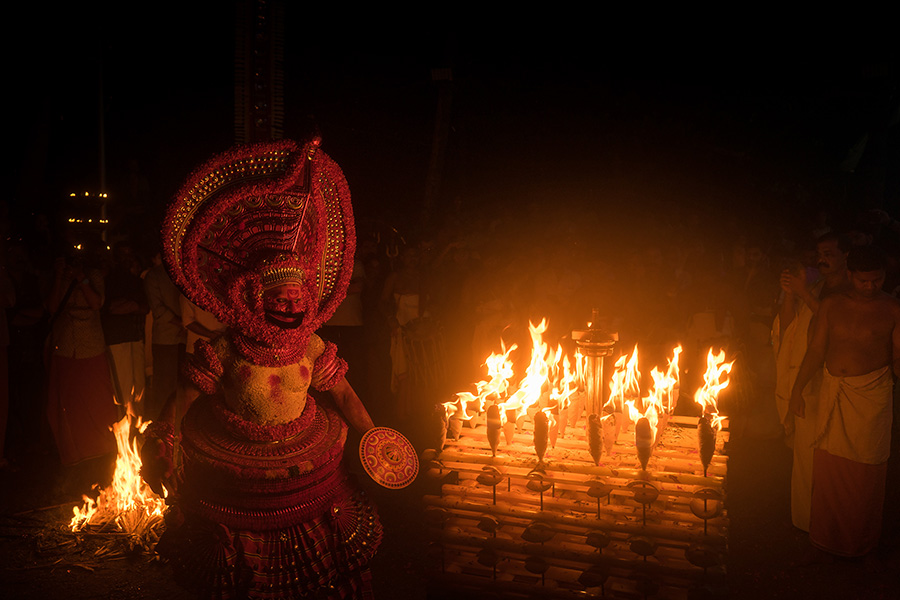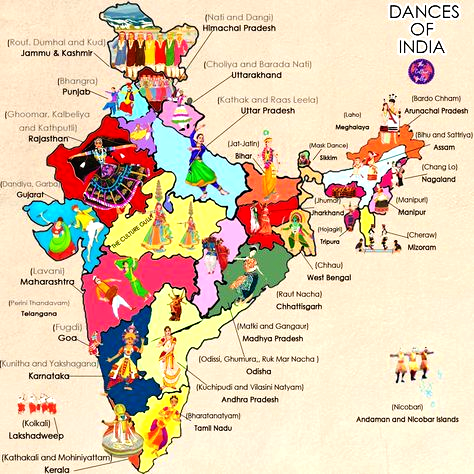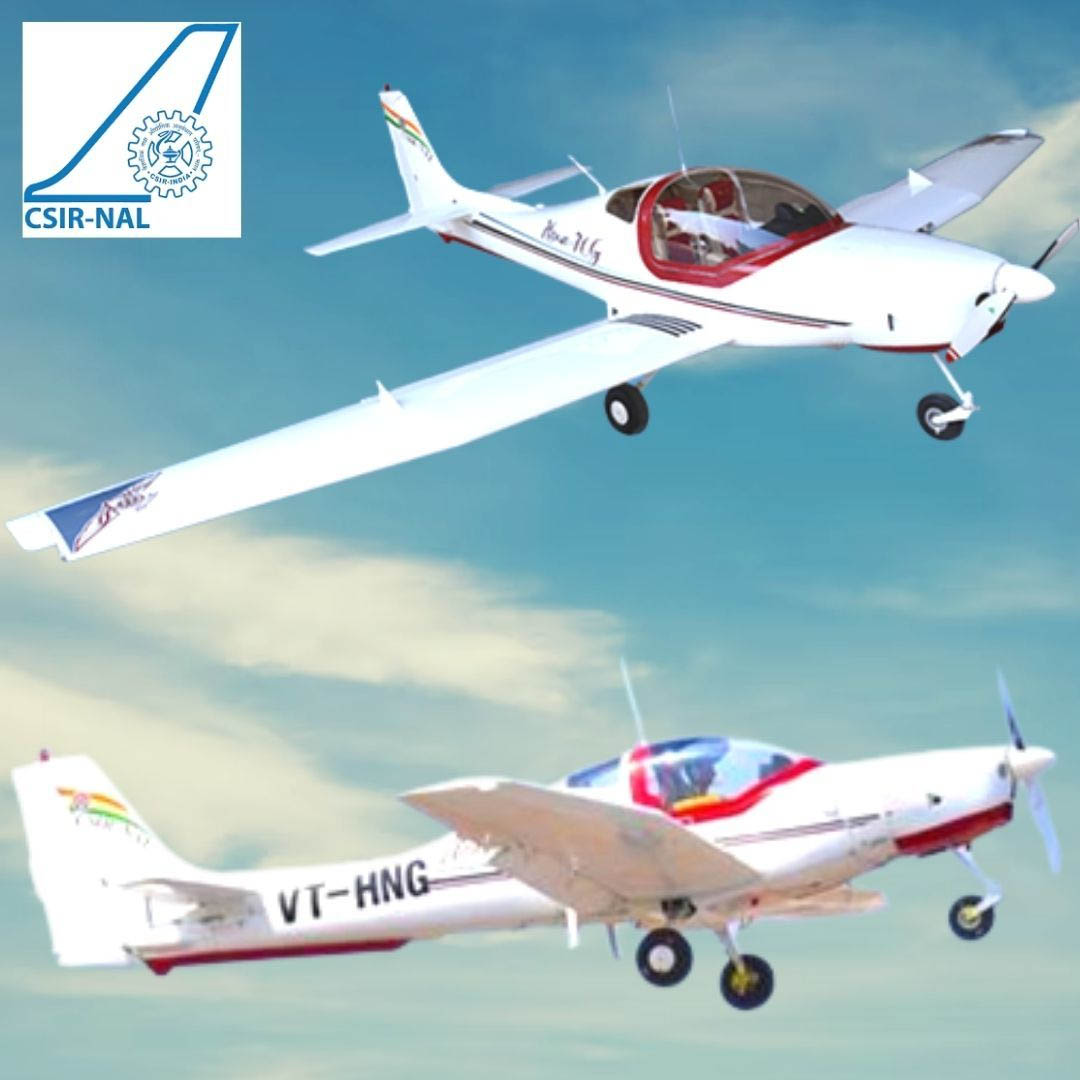Expansionism of NATO
For Prelims: NATO, Two plus four treaty, Warsaw Pact, United Nations General Assembly.
For Mains: Bilateral Groupings & Agreements, Effect of Policies & Politics of Countries on India's Interests, Russia-Ukraine Conflict, Russia-NATO Conflict.
Why in News?
When Russia launched a military invasion of Ukraine, the purported reason behind this act of territorial aggression was the eastward expansion of the North Atlantic Treaty Organisation (NATO).
- The expansionism of NATO threatened at some undefined point in the future to allow Ukraine to join the grouping as a treaty ally and thus bring this transatlantic security coalition within striking distance of Russia’s western borders.
- Earlier, an emergency special session was convened by the United Nations General Assembly (UNGA) for discussing a resolution that called for Russia to unconditionally withdraw its troops.
What is NATO?
- It is a military alliance established by the North Atlantic Treaty (also called the Washington Treaty) of April, 1949, by the United States, Canada, and several Western European nations to provide collective security against the Soviet Union.
- There are currently 30 member states, with North Macedonia becoming the latest member to join the alliance in 2020.
What are the Origins of NATO?
- The self-declared mission of NATO when it emerged in 1949, had three points:
- Deterring Soviet expansionism.
- Forbidding the revival of nationalist militarism in Europe through a strong North American presence on the continent.
- Encouraging European political integration.
- Clearly the legacy of the Nazi (Hitler) affilction and World War II weighed heavily on the minds of the founding members of NATO.
- Although NATO claims that it is only “partially true” that its very creative was to counter the threat from the erstwhile Soviet Union, there was a strong emphasis on military cooperation and collective defence in its clauses.
- For example, Article 5 of the treaty proclaims that an armed attack against one or more of them (NATO members) shall be considered an attack against them all” and that following such an attack, each ally would take “such action as it deems necessary, including the use of armed force in response.
- The broader context at the time was that in 1955, a time when the Cold War was gaining momentum, the Soviet Union signed up socialist republics of Central and Eastern Europe to the Warsaw Pact (1955), including Albania (which withdrew in 1968), Bulgaria, Czechoslovakia, East Germany, Hungary, Poland, and Romania.
- The Pact, essentially a political-military alliance, was viewed as a direct strategic counterweight to NATO.
- Its focus at the time was the fact that while East Germany was still part of the Soviet occupied-territory of Germany, the Federal Republic of Germany had joined NATO by May 1955, and Russia began to worry about the consequences of a strengthened and rearmed West Germany at its border.
- As a unified, multilateral, political and military alliance, the Warsaw Pact was aimed at tying Eastern European capitals more closely to Russia, which it effectively did for several decades through the worst hostilities of the Cold War.
- Indeed, the Pact even gave the Soviet Union the option to contain civil uprisings and dissent across the European satellite states, including in Hungary in 1956, Czechoslovakia in 1968, and Poland in 1980-1981.
- All that began to unravel by the late 1980s, when the sheer downward pressure of inevitable economic slowdown in most Eastern European Pact (Warsaw Pact) allies reduced the potential for military cooperation to make any real difference strategically across the region.
- Thus, it hardly came as a surprise in September 1990 that East Germany quit the Pact to be reunified with West Germany,and soon Czechoslovakia, Hungary, and Poland withdrew from all Warsaw Pact military exercises.
- The Pact was officially disbanded in early 1991 after the dissolution of the Soviet Union itself.
What Were the Rounds of Expansions Carried out by NATO?
- Even as the Soviet Union was dissolved into Russia and former Soviet republics, NATO, emboldened by circumstances and optimism that the global balance of power was tipping in its favour, embarked on a path of expansion.
- During the term in office of the US, NATO began, in successive rounds of negotiation and expansion, to pull former Warsaw Pacts tates into its membership.
- After reunification, while Germany retained membership of NATO, the Czech Republic, Hungary, and Poland joined the alliance in 1999. But it did not end there — in 2004, Bulgaria, Estonia, Latvia, Lithuania, Romania, Slovakia, Slovenia joined the treaty organisation.
- In 2009 Albania and Croatia signed on, in 2017 Montenegro entered the bloc and in 2020 it was North Macedonia’s turn.
Why is Russia Sensitive to NATO expansion?
- In 2008, in the week leading up to NATO’s Bucharest Conference, NATO Allies welcomed Ukraine’s and Georgia’s Euro-Atlantic aspirations for membership and agreed that these countries will become members of NATO.
- They went on to announce a period of intensive engagement with both countries at a high political level to address the questions still outstanding regarding their Membership Action Plan applications.
- This set off alarm bells in Russia, because even the very concept of Ukraine, a nation considered to hold strong historic ties first to the Soviet Union, was against Russia’s belief.
- This development prompted Russia to warn the US that no Russian leader could stand idly by in the face of steps toward NATO membership for Ukraine.
- That would be a hostile act toward Russia.
- This was only among the more recent of a long list of actions by NATO leaders that Russia considers a political betrayal.
Did NATO Violate a Promise to Avoid Expansion?
- In 1990 the US informed Russia that there would be no extension of NATO's jurisdiction for forces of NATO one inch to the east.
- While Russia seized upon this comment to fuel its ostensive outrage at NATO expansion into the Baltic states region.
- It is a fact that in early 1990, the locus of the diplomacy for the Two Plus Four – including East and West Germany plus the United States, France, the Soviet Union, and the United Kingdom – agreement was whether a unified Germany would be part of NATO.
- The US wanted to reassure Russia that NATO command structures and troops would not be transferred to the territory of the former German Democratic Republic.
- It was a difficult time in Russia, domestically, because in the aftermath of the Soviet Union’s dissolution, there was a failure to institutionalise democratic practices, a stable market economy, and a robust law and order system.
- Facing all manner of chaos at home, erstwhile Russia began to interpret the Two Plus Four Treaty (Treaty on the final settlement with respect to Germany, 1990) as a ban on NATO expansion east of Germany.
- Russia informed the US that it ruled out “the option of expanding NATO territory eastward.”
- Through the 2000s, Russia carried on in this vein, speaking with increasing alarm and anger at NATO’s steady expansion into Eastern Europe, and saying in Munich, Germany in 2007 that it is obvious that NATO expansion does not have any relation with the modernisation of the alliance itself or with ensuring security in Europe.
- On the contrary, it represents a serious provocation that reduces the level of mutual trust.
- In 2008, following NATO announcement of its intent to admit Georgia and Ukraine into its alliance, Russia invaded Georgia and took control of several of its territorial regions, and in 2014, with Ukraine drifting closer towards an economic alliance with the European Union, Russia marched into Ukraine and seized Crimea.
India Abstains at UNHRC
For Prelims: UNHRC, Quad, IAEA.
For Mains: Russia-Ukraine Conflict, Effect of Policies & Politics of Countries on India's Interests, Important International Institutions.
Why in News?
Recently, India abstained on a vote at the UN Human Rights Council in Geneva. The Council moved the resolution to set up an international commission of enquiry into Russia’s actions in Ukraine.
- The move is significant in the terms that the vote followed even after India’s meeting with Quad countries.
- India has also abstained from similar resolutions in the United Nations General Assembly and United Nations Security Council.
- India also abstained from the International Atomic Energy Agency (IAEA) resolution that was related to safety at four nuclear power stations and a number of nuclear waste sites including Chernobyl, as the Russians seized control of them.
What is the UN Human Rights Council?
- About:
- The Human Rights Council is an inter-governmental body within the United Nations system responsible for strengthening the promotion and protection of human rights around the world.
- Formation:
- The Council was created by the United Nations General Assembly in 2006. It replaced the former United Nations Commission on Human Rights.
- The Office of the High Commissioner for Human Rights (OHCHR) serves as the Secretariat of the Human Rights Council.
- OHCHR is headquartered in Geneva, Switzerland.
- Members:
- It is made up of 47 United Nations Member States which are elected by the UN General Assembly (UNGA).
- The UNGA takes into account the candidate States' contribution to the promotion and protection of human rights, as well as their voluntary pledges and commitments in this regard.
- The Council's Membership is based on equitable geographical distribution. Seats are distributed as follows:
- African States: 13 seats
- Asia-Pacific States: 13 seats
- Latin American and Caribbean States: 8 seats
- Western European and other States: 7 seats
- Eastern European States: 6 seats
- Members of the Council serve for a period of three years and are not eligible for immediate re-election after serving two consecutive terms.
- It is made up of 47 United Nations Member States which are elected by the UN General Assembly (UNGA).
- Procedures and Mechanisms:
- Universal Periodic Review: UPR serves to assess the human rights situations in all United Nations Member States.
- Advisory Committee: It serves as the Council’s “think tank” providing it with expertise and advice on thematic human rights issues.
- Complaint Procedure: It allows individuals and organizations to bring human rights violations to the attention of the Council.
- UN Special Procedures: These are made up of special rapporteurs, special representatives, independent experts and working groups that monitor, examine, advise and publicly report on thematic issues or human rights situations in specific countries.
- Issues:
- Related to the Membership: A key concern for some critics has been the composition of Council membership, which sometimes includes countries widely perceived as human rights abusers.
- China, Cuba, Eritrea, Russia and Venezuela, all of which have been accused of human rights abuses.
- Disproportionate Focus: US pulled out of the Agency in 2018 due to its disproportionate focus on Israel, which has received by far the largest number of critical council resolutions against any country.
- The US has joined the organization again.
- Related to the Membership: A key concern for some critics has been the composition of Council membership, which sometimes includes countries widely perceived as human rights abusers.
- India and UN Human Rights Council:
- Recently, a group of Special Rapporteurs to the United Nations (UN) has written to the Indian government expressing concerns over the draft Environment Impact Assessment (EIA) notification 2020.
- In 2020, India’s National Human Rights Commission submitted its mid-term report to the Council as a part of the third round of the Universal Periodic Review (UPR) process.
- India was elected to the Council for a period of three years beginning 1st January 2019.
PYQ
Q. Consider the following: (2011)
- Right to education
- Right to equal access to public service
- Right to food.
Which of the above is/are Human Right/Human Rights under “Universal Declaration of Human Rights”?
(a) 1 only
(b) 1 and 2 only
(c) 3 only
(d) 1, 2 and 3
Ans: (d)
Zaporizhzhia Nuclear Powerplant: Ukraine
For Prelims: Zaporizhzhia Nuclear Powerplant Location, Location of Ukraine.
For Mains: Russia’s war over Ukraine, Nuclear Power Plant in India, Effect of Policies & Politics of Countries on India's Interests.
Why in News?
Recently, Russian forces seized the Zaporizhzhia Nuclear Powerplant, the largest nuclear power plant in Europe.
- The developments at the plant triggered an emergency meeting of the UN Security Council.
Where is the Zaporizhzhia Nuclear Powerplant Located?
- It is located on the banks of the Dnieper river, just 200 kilometers from the conflicted Donbas region where Russian-backed separatists and Ukrainian forces have been fighting.
- Zaporizhzhya is one of the four operating NPPs in the country and has been operating since 1984.
- It accounts for about 40% of the total electricity generated by all the Ukrainian NPPs and one-fifth of Ukraine’s annual electricity production.
- The Zaporizhzhya NPP consists of six Pressurised Water Reactor (PWR) units commissioned between 1984 and 1995, with a gross electrical capacity of 1,000MW each.
PYQ
The function of heavy water in a nuclear reactor is to (2011)
(a) Slow down the speed of neutrons
(b) Increase the speed of neutrons
(c) Cool down the reactor
(d) Stop the nuclear reaction
Ans: (a)
What is a Pressurized Water Reactor?
- It is a type of light water reactor that uses ordinary water as the moderator and coolant.
- The PWR plant is the most common type of nuclear power reactor in the world.
- The Pressurised Heavy Water Reactors (PHWRs) are fuelled by Natural Uranium while Light Water Reactors (LWRs) are fuelled by Low Enriched Uranium.
- A PWR has two water systems:
- One is called the reactor (primary) system that retrieves heat generated in the reactor, and the other is called the turbine (secondary) system that produces electric power with steam generated by that heat.
PYQ
To meet its rapidly growing energy demand, some opine that India should pursue research and development on thorium as the future fuel of nuclear energy. In this context, what advantage, does thorium hold over uranium? (2012)
- Thorium is far more abundant in nature than uranium.
- On the basis of per unit mass of mined mineral, thorium can generate more energy compared to natural uranium.
- Thorium produces less harmful waste compared to uranium.
Which of the statements given above is/are correct?
(a) 1 only
(b) 2 and 3 only
(c) 1 and 3 only
(d) 1, 2 and 3
Ans: (d)
What are the related Concerns?
- Attacks on nuclear power facilities run counter to international humanitarian law, specifically, Article 56 of Additional Protocol I to the Geneva Conventions.
- Additional Protocol I of the Convention: Protection of works and installations containing dangerous forces.
- The Chernobyl disaster in 1986 also is a reminder of why it is vital to ensure all nuclear power plants have the highest standards of safety and security.
What was the Chernobyl Disaster?
- The Chernobyl accident in 1986 was the result of a flawed reactor design that was operated with inadequately trained personnel.
- The resulting steam explosion and fires released at least 5% of the radioactive reactor core into the environment, with the deposition of radioactive materials in many parts of Europe.
- The disaster was a unique event and the only accident in the history of commercial nuclear power where radiation-related fatalities occurred.
- Two Chernobyl plant workers died due to the explosion on the night of the accident, and a further 28 people died within a few weeks as a result of acute radiation syndrome.
- Some 350,000 people were evacuated as a result of the accident, but resettlement of areas from which people were relocated is ongoing.
What about the Nuclear Power Plants in India?
- Nuclear energy is an important component of the country’s energy mix and is being pursued along with other sources of energy in an optimal manner.
- It is a clean, environment friendly base load source of power available 24X7.
- It also has huge potential which can ensure long term energy security of the country in a sustainable manner.
- There are presently 22 reactors with a total capacity of 6780 MW in operation and one reactor, KAPP-3 (700 MW) was connected to the grid in January 2021.
- The Government has accorded administrative approval and financial sanction for construction of 12 nuclear power reactors - 10 indigenous 700 MW Pressurized Heavy Water Reactors (PHWRs) to be set up in fleet mode & 2 units of Light Water Reactors (LWRs) to be set up in cooperation with Russian Federation.
- On progressive completion of the projects under construction and accorded sanction, the nuclear capacity is expected to reach 22480 MW by 2031.
- The Government has also accorded ‘In-Principle’ approval for five new sites for locating nuclear power plants in future.
- In India, some nuclear reactors are kept under “IAEA (International Atomic Energy Agency) safeguards”.
- The nuclear facilities are kept under IAEA)safeguards if the source of Uranium, which is the fissile material for a nuclear reactor, is from outside the territory of India or if the new reactor plants are established with foreign collaboration.
- This is to ensure that imported uranium was not diverted for military use and to assure that the imported uranium is used to generate nuclear energy for civilian purposes.
PYQ
In India, why are some nuclear reactors kept under “IAEA safeguards” while others are not? (2020)
(a) Some use uranium and others use thorium
(b) Some use imported uranium and others use domestic supplies
(c) Some are operated by foreign enterprises and others are operated by domestic enterprises
(d) Some are State-owned and others are privately owned
Ans: (b)
Humanitarian Corridors
For Prelims: Humanitarian corridors, Geneva Conventions of 1949 and their Additional Protocols of 1977, United Nation.
For Mains: Humanitarian corridors, Russia-Ukraine War, Geneva Conventions of 1949 and their Additional Protocols of 1977, World War II, syrian civil war, Libyan civil war, and Gaza war
Why in News?
Recently, Russia declared a temporary ceasefire in the Russia-Ukraine War to provide "humanitarian corridors" for civilians.
- As the war enters a likely deadlier phase, numerous civilians attempt to leave the country for safety and refuge, there must be humanitarian measures taken to reduce civilian casualties.
What are Humanitarian Corridors?
- About: They are demilitarised zones, in a specific area and for a specific time — and both sides of an armed conflict agree to them.
- The United Nations (UN) considers humanitarian corridors to be one of several possible forms of a temporary pause of armed conflict.
- For example through large-scale bombing of civilian targets — humanitarian corridors can provide crucial relief.
- Need: The corridors are necessary when cities are under siege and the population is cut off from basic food supplies, electricity and water.
- Function: Through these corridors, either food and medical aid can be brought to areas of conflict, or civilians can be evacuated.
- Accessibility: Access to humanitarian corridors is determined by the parties to the conflict. It’s usually limited to neutral actors, the UN or aid organisations such as the Red Cross.
- They can also be used by UN observers, Non-governmental Organisations (NGOs) and journalists to gain access to contested areas where war crimes are being committed.
What are International conventions related to the Humanitarian Corridor?
- Even before international organisations recognised humanitarian corridors, such zones were defined in armed conflicts including in World War II when Jewish children were evacuated from areas under Nazi control to the United Kingdom.
- Humanitarian corridors were defined in resolution 45/100 of the UNs’ general assembly in 1990.
- It said that “relief corridors” are seen by the international community as an important instrument to back up the right of civilians to receive assistance during armed conflicts.
- It is also recognized in the Geneva Conventions of 1949 and their Additional Protocols of 1977.
- In 1992, the International Institute of Humanitarian Law from Sanremo in Italy defined the concept more specifically.
- "Humanitarian assistance can transit, in this case, through the so-called humanitarian corridors, which must be respected and protected by the relevant authorities and, if necessary, under the authority of the UN".
- Humanitarian corridors have been frequently used in the Syrian civil war, Libyan civil war, and Gaza war among other such conflict zones.
What are Associated Issues?
- Difficult To Enforce: Since all sides need to agree to set up the corridors, Humanitarian corridors are difficult to enforce.
- There are many wars and conflicts where calls for civilian corridors or a pause in fighting have been made in vain.
- In the ongoing war in Yemen, for instance, the UN has so far failed in its negotiations.
- Possible Misuse: There is a risk of military or political abuse.
- For example, the corridors can be used to smuggle weapons and fuel into besieged cities.
Way Forward
- Need for Humanitarian Pause: In addition to the humanitarian corridor, the global community should encourage a humanitarian pause as the corridors are constructed.
- A humanitarian pause would involve a temporary cessation of fighting to protect civilians.
- This will enable civilians to reach the corridors and move through safely.
PYQ
Q. Very recently, in which of the following countries have lakhs of people either suffered from severe famine/acute malnutrition or died due to starvation caused by war/ethnic conflicts? (2018)
(a) Angola and Zambia
(b) Morocco and Tunisia
(c) Venezuela and Colombia
(d) Yemen and South Sudan
Ans: (d)
FATF retains Pakistan in Grey List
For Prelims: Financial Action Task Force.
For Mains: Money Laundering, India and its neighbourhood, Important international institutions.
Why in News?
The Financial Action Task Force (FATF) has retained Pakistan on its ‘greylist’ or 'increased monitoring list’. The FATF included the United Arab Emirates (UAE), with which India signed a free trade agreement in February 2021.
- There are 17 countries on the grey list of the FATF.
- Zimbabwe has been excluded from the list after a review found it compliant on all parameters.
What are the Key Points?
- About:
- FATF decided against existing Pakistan from the category despite the country meeting 32 out of 34 action points.
- It noted that Pakistan had completed 26 of the 27 action items in its 2018 action plan of the FATF and of the seven action items of the 2021 action plan of the FATF’s Asia Pacific Group on Money Laundering (APG).
- In response to additional deficiencies later identified in Pakistan’s 2019 APG Mutual Evaluation Report in June 2021, Pakistan provided further high-level commitment to address these strategic deficiencies pursuant to a new action plan that primarily focuses on combating money laundering.
- The country had two concurrent action plans with a total of 34 action points, of which 30 had either been fully or largely addressed to curb money laundering and terror financing.
- The FATF encouraged Pakistan to continue making progress to address, as soon as possible, the one remaining item by continuing to demonstrate that terror financing investigations and prosecutions target senior leaders and commanders of UN-designated terrorist groups.
- Since June 2018 - when Pakistan made a high-level political commitment to work with the FATF and APG to strengthen its anti-money laundering/combating the financing of terrorism (AML/CFT) regime and to address its strategic counter–terrorist financing–related deficiencies — its continued political commitment had led to significant progress across a comprehensive CFT action plan.
- Background:
- The FATF had issued the 27-point action plan after placing Pakistan on the ‘Grey List’ in June 2018. The action plan pertains to curbing money laundering and terror financing.
- Pakistan was first put on the list in 2008, removed in 2009 and then again remained under increased monitoring from 2012 to 2015.
- Pakistan's inclusion in the grey list has adversely impacted that country's prospects of obtaining financial assistance from world bodies such as the International Monetary Fund, World Bank, and Asia Development Bank.
What is the Financial Action Task Force?
- About:
- An inter-governmental body established in 1989 during the G7 Summit in Paris.
- Assesses the strength of a country’s anti-money laundering and anti-terror financing frameworks, however it does not go by individual cases.
- Objectives:
- To set standards and promote effective implementation of legal, regulatory and operational measures for combating money laundering, terrorist financing and other related threats to the integrity of the international financial system.
- Headquarters:
- Its Secretariat is located at the Organisation for Economic Cooperation and Development (OECD) headquarters in Paris.
- Member Countries:
- The FATF currently has 39 members including two regional organisations - the European Commission and Gulf Cooperation Council. India is a member of the FATF.
- Lists under FATF:
- Grey List:
- Countries that are considered safe haven for supporting terror funding and money laundering are put in the FATF grey list.
- This inclusion serves as a warning to the country that it may enter the blacklist.
- Black List:
- Countries known as Non-Cooperative Countries or Territories (NCCTs) are put in the blacklist. These countries support terror funding and money laundering activities.
- The FATF revises the blacklist regularly, adding or deleting entries.
- Currently, Iran and Democratic People's Republic of Korea (DPRK) are under High-risk Jurisdiction or black list.
- Grey List:
- Sessions:
- The FATF Plenary is the decision making body of the FATF. It meets three times per year.
Great Barrier Reef: IPCC
For Prelims: Great Barrier Reef, Intergovernmental Panel on Climate Change.
For Mains: Significance of Coral Reefs and Initiatives to protect it, Conservation.
Why in News?
Recently, a report published by the Intergovernmental Panel on Climate Change (IPCC) states that the Great Barrier Reef is in crisis and suffering grave impacts from climate change.
- The report points to three previous mass bleaching events from 2016 to 2020 that caused significant coral loss, and warns that there has been “mass mortality” of some coral species.
- Great Barrier Reef, world's largest coral reef complex, located in the Pacific Ocean off northeastern Australia.
What are the Findings of the Report?
- Warming ocean temperature is causing frequent and severe coral bleaching.
- The worst bleaching event, in 2016, affected over 90% of the reef, and a punishing succession of bleaching incidents has left the northern and middle portion of the reef system in a highly degraded state.
- Even if the global community achieves its goal of limiting future warming to 1.5 degrees Celsius since pre-industrial times, that still wouldn’t be sufficient to prevent more frequent mass bleaching events, though it may reduce their occurrence.
- The ocean warming and marine heatwaves will cause the loss and degradation of tropical shallow coral reefs, leading to “widespread destruction” of coral reef ecosystems.
- If bleaching persists, the IPCC estimates 10,000 jobs and AUD1 billion in revenue would be lost every year from declines in tourism alone.
- Around a billion people worldwide rely on coral reefs for their everyday living, which is why a failure to urgently reduce greenhouse gas emissions could have devastating effects for humanity.
- Beyond the reef, climate change will lead to a surge in heat-related deaths in Australia, the extinction of certain animal species, and more wildfires.
- Koalas are at risk of local extinctions due to increasing drought and rising temperatures.
- And rising sea levels and storm surges led to the recent extinction of a rodent species called Bramble Cay melomys, which lived on a remote cay in the northern Great Barrier Reef.
- Black Summer fires of late 2019 and early 2020 that killed at least 33 people and destroyed more than 3,000 homes.
- Even Australia’s famed eucalyptus trees, which are naturally resilient to the country’s seasonal fires, may not be able to withstand the ferocity and frequency of the predicted blazes, which could lead to the decimation of forests.
- The report also provides extensive lists of climate adaptation strategies, such as improving building standards so that homes stay cooler during potentially deadly heat waves.
PYQ
The scientific view is that the increase in global temperature should not exceed 2°C above preindustrial level. If the global temperature increases beyond 3°C above the pre-industrial level, what can be its possible impact/impacts on the world? (2014)
- Terrestrial biosphere tends toward a net carbon source.
- Widespread coral mortality will occur.
- All the global wetlands will permanently disappear.
- Cultivation of cereals will not be possible anywhere in the world.
Select the correct answer using the code given below:
(a) 1 only
(b) 1 and 2 only
(c) 2, 3 and 4 only
(d) 1, 2, 3 and 4
Ans: (b)
What is the Great Barrier Reef?
- It is the world’s most extensive and spectacular Coral Reef ecosystem composed of over 2,900 individual reefs and 900 islands.
- The reef is located in the Coral Sea (North-East Coast), off the coast of Queensland, Australia.
- It can be seen from outer space and is the world’s biggest single structure made by living organisms.
- This reef structure is composed of and built by billions of tiny organisms, known as coral polyps.
- They are made up of genetically identical organisms called polyps, which are tiny, soft-bodied organisms. At their base is a hard, protective limestone skeleton called a calicle, which forms the structure of coral reefs.
- These polyps have microscopic algae called zooxanthellae living within their tissues. The corals and algae have a mutualistic (symbiotic) relationship.
- It was selected as a World Heritage Site in 1981.
PYQ
Which of the following have coral reefs? (2014)
- Andaman and Nicobar Islands
- Gulf of Kachchh
- Gulf of Mannar
- Sunderbans
Select the correct answer using the code given below:
(a) 1, 2 and 3 only
(b) 2 and 4 only
(c) 1 and 3 only
(d) 1, 2, 3 and 4
Ans: (a)
What are the Initiatives to Protect Corals?
- A number of global initiatives are being taken to address the issues, like:
- International Coral Reef Initiative
- Global Coral Reef Monitoring Network (GCRMN)
- Global Coral Reef Alliance (GCRA)
- The Global Coral Reef R&D Accelerator Platform
- Similarly, the Ministry of Environment and Forests and Climate Change (MoEF&CC), India has included the studies on coral reefs under the Coastal Zone Studies (CZS).
- In India, the Zoological Survey of India (ZSI), with help from Gujarat’s forest department, is attempting a process to restore coral reefs using “biorock” or mineral accretion technology.
- National Coastal Mission Programme, to protect and sustain coral reefs in the country.
PYQ
Consider the following statements: (2018)
- Most of the world’s coral reefs are in tropical waters.
- More than one-third of the world’s coral reefs are located in the territories of Australia, Indonesia and Philippines.
- Coral reefs host far more number of animal phyla than those hosted by tropical rainforests.
Which of the statements given above is/are correct?
(a) 1 and 2 only
(b) 3 only
(c) 1 and 3 only
(d) 1, 2 and 3
Ans: (d)
Low-Energy Chip to Prevent Side Channel Attacks
For Prelims: Side Channel Attacks, Internet of Things.
For Mains: IT & Computers Significance of Low Energy Chip in Countering Side Channel Attacks.
Why in News
Recently, two Indian researchers have built a low-energy security chip that is designed to prevent Side-Channel Attacks (SCAs) on IoT (Internet of Things) devices.
- IoT is a computing concept that describes the idea of everyday physical objects being connected to the internet and being able to identify themselves to other devices.
- It is being used to create smart infrastructure in various verticals such as Power, Automotive, Safety & Surveillance, Remote Health Management, Agriculture, Smart Homes and Smart Cities etc, using connected devices.
What is a Security Chip?
- Security Chip means the application specific integrated circuit that instantiates the Security Feature after being embedded in the device.
What is SCA?
- A SCA is a security exploit that aims to gather information from or influence the program execution of a system by measuring or exploiting indirect effects of the system or its hardware -- rather than targeting the program or its code directly.
- Typically, SCAs aim to extract sensitive information like cryptographic keys, proprietary machine learning models and parameters by measuring things like timing information, power consumption and electromagnetic leaks of a system.
- An SCA may also be referred to as a sidebar attack or an implementation attack.
- It can be applied to any data that you want to keep secret.
- For example, it can be used on your smartwatch to extract your ECG and heart rate signal,”
- Types of SCAs: Timing attack, Electromagnetic (EM) attack, Acoustic, Power, Optical, memory Cache, hardware weaknesses.
- Even though SCAs are difficult to execute on most modern systems, the increasing sophistication of machine learning algorithms, greater computing power of devices and measuring devices with increasing sensitivities are making SCAs more of a reality.
What is the Significance of New Architecture?
- Uses Much Less Power:
- Since SCAs are difficult to detect and defend against, countermeasures against them have notoriously been very computing power and energy-intensive. This is where the new chip architecture comes in.
- The chip is smaller than the size of a thumbnail and uses much less power than traditional security measures against SCAs.
- Easily be Incorporated:
- It has been built to be easily incorporated into smartwatches, tablets, and a variety of other devices.
- It can be used in any sensor node which connects user data. For example, it can be used in monitoring sensors in the oil and gas industry, it can be used in self-driving cars, in fingerprint matching devices and many other applications.
- Near-Threshold Computing help reveal nothing:
- The chip uses near-threshold computing, a computing method where the data to be worked on is first split into separate, unique and random components. The chip then conducts operations separately on each component in a random order before aggregating the results for a final result.
- Due to this method, the information leak from the device through power-consumption measurements are random and would reveal nothing but gibberish in an SCA.
- However, this method is energy and computation power-intensive while also requiring more system memory to store information.
What are the Issues?
- The implementation of this chip architecture in a system would require at least a five-fold increase in energy consumption 1.6 times the silicon area of an insecure implementation.
- Also, the architecture only protects against energy consumption-based SCAs and doesn’t defend against electromagnetic SCAs.
PYQ
When the alarm of your smartphone rings in the morning, you wake up and tap it to stop the alarm which causes your geyser to be switched on automatically. The smart mirror in your bathroom shows the day’s weather and also indicates the level of water in your overhead tank. After you take some groceries from your refrigerator for making breakfast, it recognises the shortage of stock in it and places an order for the supply of fresh grocery items. When you step out of your house and lock the door, all lights, fans, geysers and AC machines get switched off automatically. On your way to office, your car warns you about traffic congestion ahead and suggests an alternative route, and if you are late for a meeting, it sends a message to your office accordingly. (2018)
In the context of emerging communication technologies, which one of the following terms best applies to the above scenario?
(a) Border Gateway Protocol
(b) Internet of Things
(c) Internet Protocol
(d) Virtual Private Network
Ans: (b)
Theyyam
Why in News?
Recently, Kerala Tourism department have started live streaming of an annual temple festival called Theyyam performances, to promote cultural tourism.
What is Theyyam?
- Theyyam is a popular ritual form of dance worship in Kerala and Karnataka, India.
- It consisted of thousand-year-old traditions, rituals and customs.
- The people consider Theyyam itself as a channel to a god and they thus seek blessings from Theyyam.
- Each Theyyam is a man or a woman who attained divine status by performing heroic deeds or by leading a virtuous life
- Most Theyyams are believed to be the incarnations of Shiva or Shakti (the consort of Shiva). Or they have strong associations with these principal deities of Hinduism.
- There are over 400 theyyams. Some of these are very important.
What are the major types of Theyyam?
- Vishnumoorthi:
- There are only two Vaishnava Theyyams – Daivatar and Vishnumoorthi.
- These Theyyams are believed to be the incarnations of Lord Vishnu.
- This Theyyam narrates the story of Palanthai Kannan who was a great devotee of Lord Vishnu.
- Gulikan
- Gulikan is believed to be an incarnation of Yama, the Hindu god of death and justice.
- According to Indian mythology, Gulikan was one of the most important warriors of Lord Shiva.
- Kuttichathan:
- It is the theyyam of Bhrahmin caste.
- Kuttichathan theyyam is considered to have originated for Lord Shiva in Vishnu Maaya.
Major Dances in India
PYQ
Q. Consider the following pairs: (2014)
- Garba : Gujarat
- Mohiniattam : Odisha
- Yakshagana : Karnataka
Which of the pairs given above is/are correctly
matched?
(a) 1 only
(b) 2 and 3 only
(c) 1 and 3 only
(d) 1, 2 and 3
Ans: (c)
Flying Trainer HANSA-NG
Why in News?
Recently, HANSA-NG, a first of its kind, indigenously developed aircraft trainer has completed sea level trials.
- It is developed by the CSIR-National Aerospace Laboratories (CSIR-NAL).
- National Aerospace Laboratories (NAL), a constituent of the Council of Scientific and Industrial Research (CSIR) established in the year 1959 is the only government aerospace Research & Development laboratory in the country's civilian sector.
- Council of Scientific and Industrial Research (CSIR) is the largest Research and Development (R&D) organisation in India.
What are the features of HANSA-NG?
- The HANSA-NG, or HANSA-New Generation, is one of the most advanced flying trainers.
- HANSA-NG is an upgraded version of HANSA, which saw the first flight in 1993, and was certified in 2000.
- The Centre approved HANSA-NG in 2018 and NAL retro-modified HANSA-3 aircraft with a glass cockpit and got it certified by DGCA (Directorate General of Civil Aviation). The aircraft was demonstrated at Aero-India 2019.
- It is powered by a Rotax Digital Control Engine and is designed to meet the need for trainer aircraft by flying clubs in India.
- It is an ideal aircraft for Commercial Pilot Licensing (CPL) due to its low cost and low fuel consumption.

